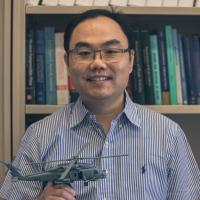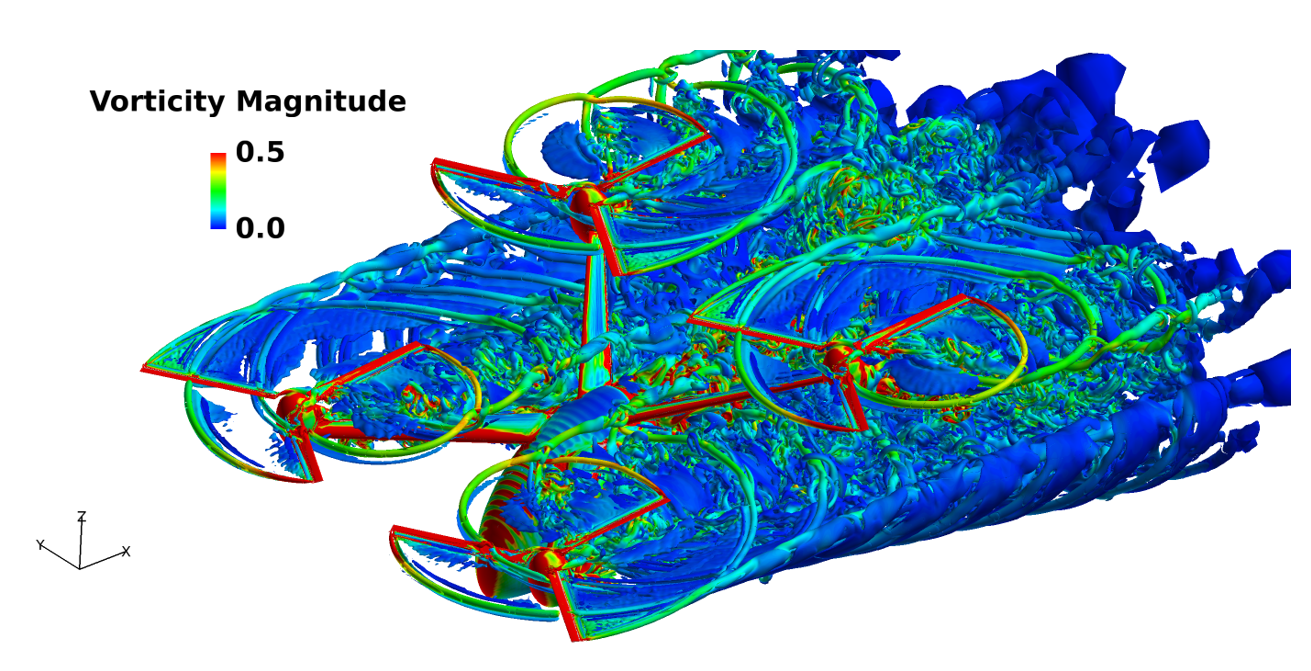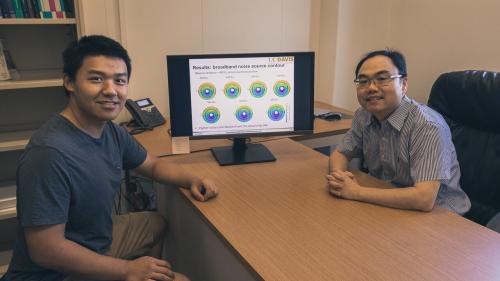
Your Flying Taxi is Almost Here
UC Davis' Seongkyu Lee is tackling rotorcraft noise, an important challenge in making flying taxis a reality
In less than a decade, your taxi might come from the sky instead of the street. Once a hallmark of science fiction, flying taxis have become the cutting edge of aerospace engineering thanks to researchers like UC Davis’ Seongkyu Lee, an associate professor of mechanical and aerospace engineering (MAE). Lee’s group is conducting groundbreaking aeroacoustics research to lay the computational groundwork to make air taxis a reality.

The emerging field, known as urban air mobility (UAM), promises to develop electric vertical take-off and landing (eVTOL) vehicles to transport people and goods across short distances. If successful, UAM will create a new method of transportation, alleviate traffic congestion in cities and generate an estimated $1 trillion in the coming decades, according to Morgan Stanley.
“If this is successfully implemented, it is going to change our daily lives, [start] a new golden age in aerospace engineering and completely change the landscape in industry and the job market,” said Lee.
Though the excitement is palpable, one of the biggest obstacles is noise. Anyone who’s been around a helicopter or a drone knows how loud they can be, and air taxis will face that same risk. The goal is to make vehicles blend into existing city noise by being, at most, as loud as cars—about 62 decibels. If the vehicles are too loud, city residents and officials will likely reject them.
“Noise is one of the biggest challenges in urban air mobility,” he said. “If the noise is not acceptable, then this business will not be successful.”
Building an Infrastructure
To make viable eVTOL designs, researchers need to accurately predict how loud their aircraft will be. This means accounting for two types of noise—tonal and broadband noise. Tonal noise is the repetitive and intermittent sound rotors make as they spin and interact with the air. Broadband noise is the whooshing sound the aircraft makes as it flies. Both are equally important.
Broadband noise is difficult to predict because it’s caused by complex air flow turbulence from rotor blades or wings—which involve difficult fluid physics problems. Lee is among the first to use highly-accurate computational fluid dynamics (CFD) software to unravel the detailed physics of how air flows around of UAM aircraft and creates noise.
"Professor Lee's work is a giant step forward for the semi-empirical prediction of rotor broadband noise," -Ben Goldman
Since 2019, Lee and his Ph.D. student Sicheng (Kevin) Li have worked through this complexity and developed an efficient, physics-based broadband noise prediction tool called UCD-QuietFly, which has been widely adopted by the eVTOL industry.

“Professor Lee’s work is a giant step forward for the semi-empirical prediction of rotor broadband noise,” said Ben Goldman, who uses UCD-QuietFly at industry leader Archer Aviation. “With its incorporation in the UCD-QuietFly program, he has created a powerful and accessible tool to aid in the design of the next generation of quiet UAM vehicles.”

“Professor Lee and his research group have made important contributions to the modeling of acoustic noise with their UCD-QuietFly software,” said Ben Berry, a lead engineer at the eVTOL company Kitty Hawk. “Reducing noise is critical to public acceptance, and improved prediction capabilities such as UCD-QuietFly will help the industry as a whole make better design choices to achieve this.”
“UCD-QuietFly is an especially accurate and practical tool for predicting broadband noise of eVTOLs in conceptual and preliminary design stages,” said Sehwan Park, a lead engineer at Hyundai Motor Company.
As part of a new project funded by the U.S. Army under the Vertical Lift Research Center of Excellence (VLRCOE) at Pennsylvania State University, Lee’s group will also develop multi-fidelity models of aerodynamic and aeroacoustic interactions between prop-rotors and wings to inform UAM aircraft development. The goal is to improve the accuracy of medium-fidelity models using tools from the highly-detailed CFD database.
Additionally, Lee has been funded by the NASA University Leadership Initiative (ULI) to develop tools for UAM researchers to optimize their designs, given constraints on noise, design and performance. In collaboration with UC San Diego, Lee’s team will develop new acoustic theories and codes that will be implemented in NASA’s multi-disciplinary design, analysis and optimization program for simulating aircraft designs.
“Our research is not just focused on noise prediction—we also aim to reduce noise and we want to achieve this in the system-level design,” he said.

Paving the Way
Like any flying vehicle, air taxis will be subject to a regulated flight path—known as an airspace corridor—that’s based on safety, equity and environmental impact. Since air taxis are electric, they pollute mainly through noise. As part of a new project with Caltrans, Lee’s team will collaborate with UC Berkeley to create a “noise map” for a 3D digital UAM airspace corridor simulation software that will help policymakers develop airspace corridor guidelines in California.
To do this, they will study how eVTOL noise propagates across the community under different conditions, as aircraft can be much louder when it’s cold, cloudy or windy, and having multiple UAM vehicles flying at once may amplify sound.
“The state government will make the final decision about this operation, but we are going to help them make a better decision with this computational tool,” he said. “I’m very excited about this project because it certainly will expand our lab capability to more practical research. This is a first step into this research area, but I think this is the right time.”
Lee says UAM is an exciting place to be, especially for students. The MAE department recently created an undergraduate course on drones and quadcopters and a graduate course on rotorcraft—both of which he teaches. The last three NASA university student design competitions, which UC Davis aerospace engineering teams won twice, were also focused on solving a UAM challenge, showing NASA’s interest in the area. Industry demand is also booming.
“UAM will open up a new golden age of aerospace engineering,” he said. “This community is growing and students are very excited about the opportunities. I’m glad that students are learning and working on exciting aircraft research at universities and then finding jobs in the same field after graduation. Eventually, they will change the world and make science-fiction dreams come true.”
This story was featured in the Fall 2021 issue of Engineering Progress.
